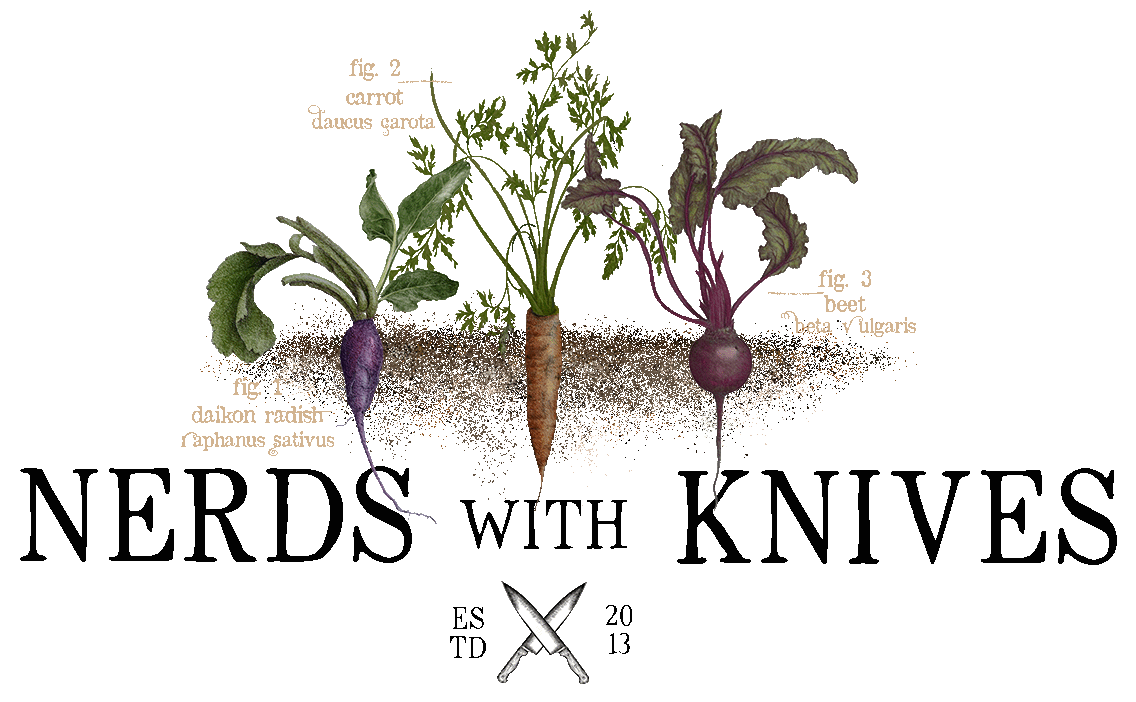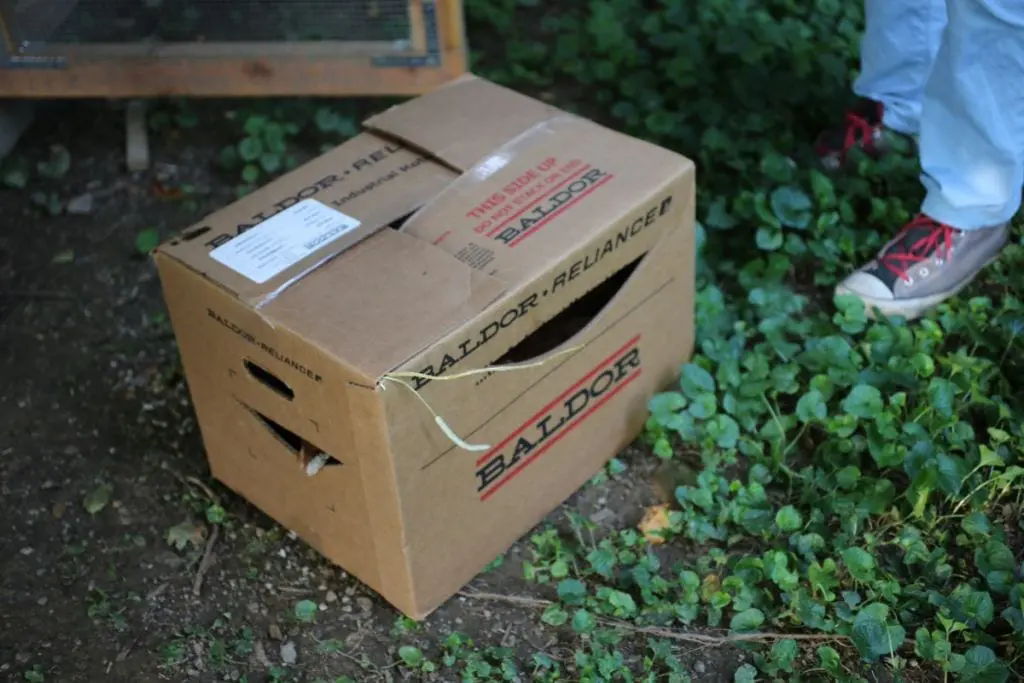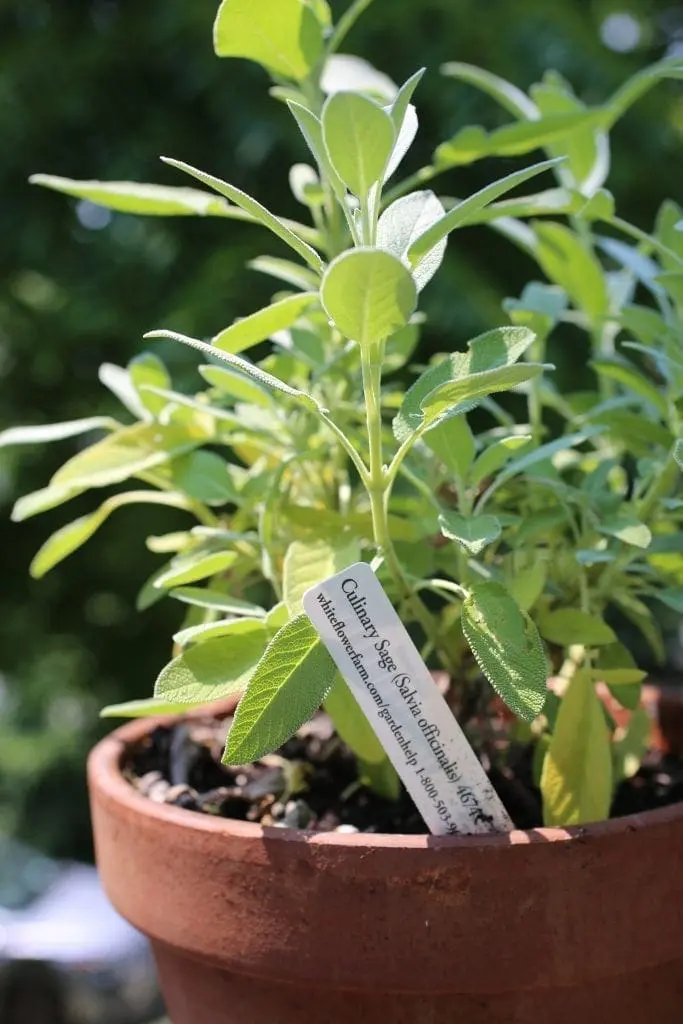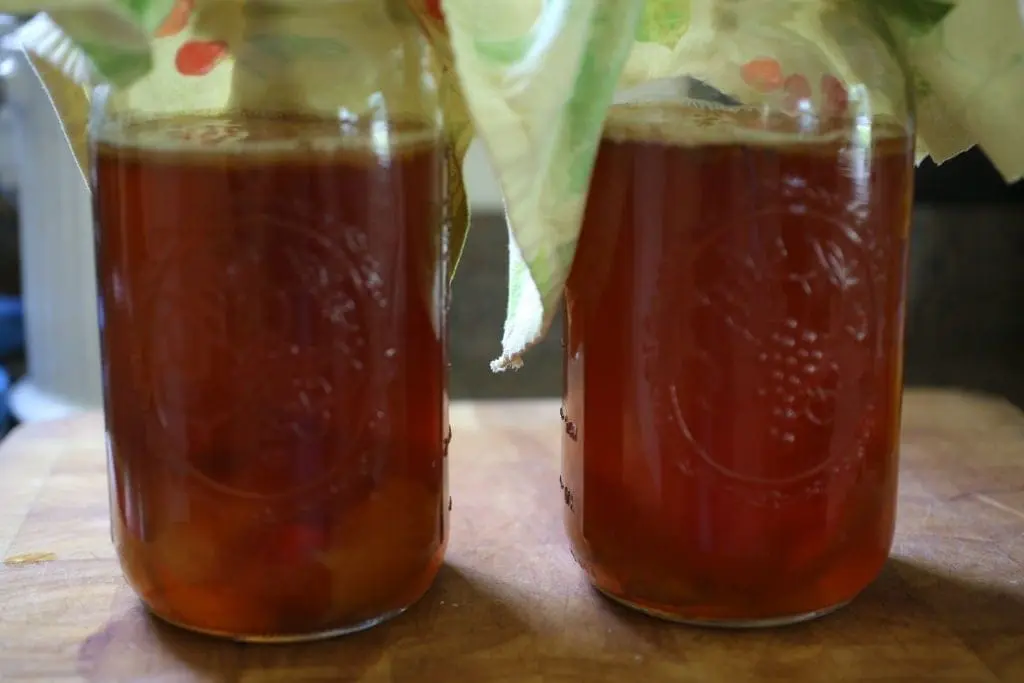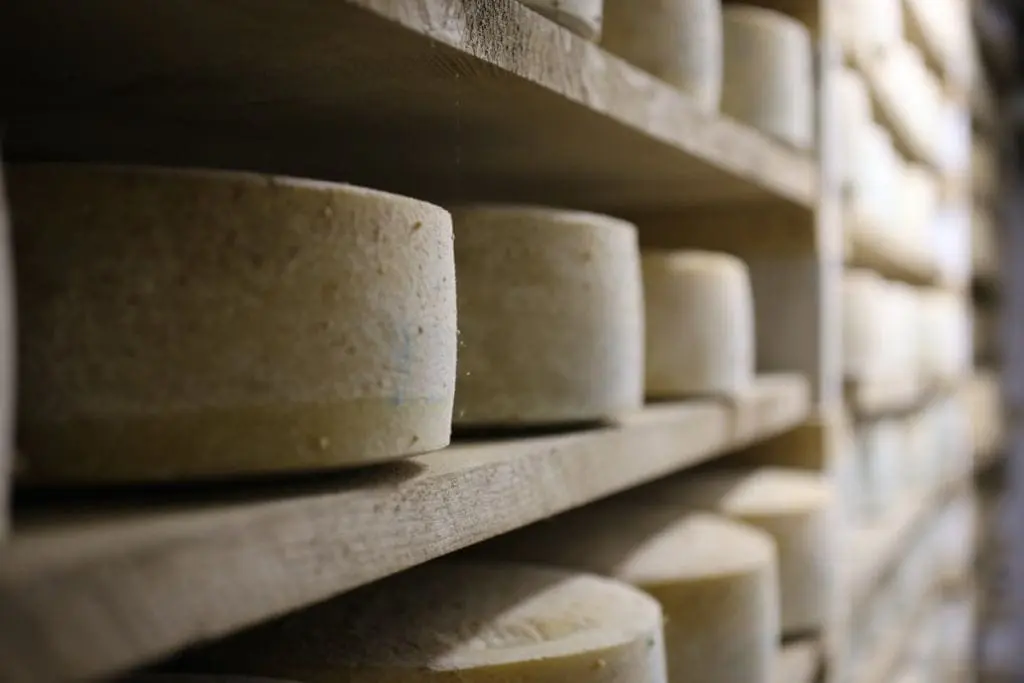What ho, and all that, spiffing readers. I’m being especially upper-crust because I wanted to tell you about the scones I made a couple of weeks ago. Let’s take a gander at them first. Have a good look, there you go, feast your eyes.
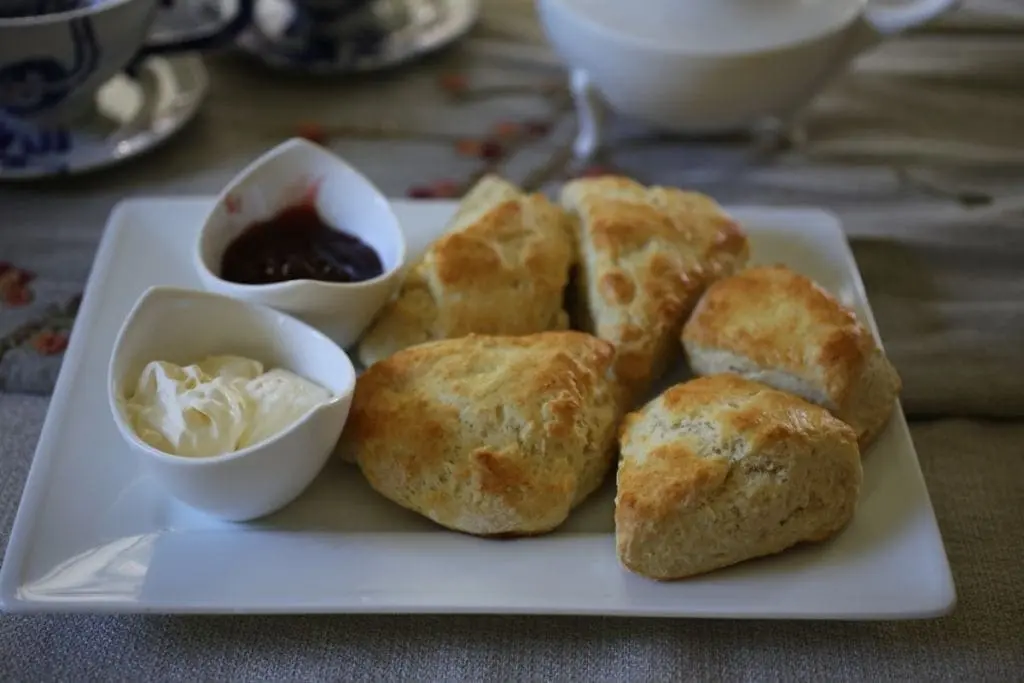
Alright, that’s enough. Put your eyes away now.
On our spring trip to the UK, I wanted to take Emily out for a right old afternoon tea, with really nice sandwiches, scones, cream, jam, and all that. (You know, the sort of thing that Americans imagine that we Brits have every day, presumably as a break from striding around our castle grounds and whipping peasants.) We managed to find one at Huffkins in Burford (if you visit their site, do look for the amusing “About Our Employees” section) – all piled up on a proper tiered cake stand.
Anyway, I had picked up a jar of clotted cream at our local health food store last week (just let that sink in for a moment. Clotted cream. Health food store. Hm.) and decided on a whim to make scones. After some cursory research, and quickly realising I didn’t have any buttermilk (a requirement for many recipes) I settled on this version from Rachel Allen. I’ve adapted for US volumes and temperature. You can fuss with biscuit cutters and the like, but I like the country-style triangles simply cut from the dough with a knife.
